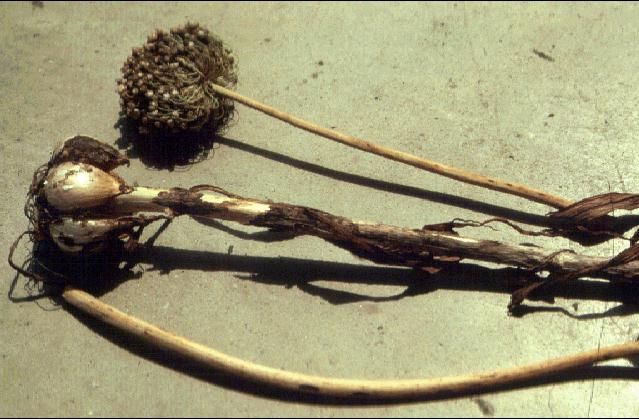Garlic—Allium sativum L.1
Garlic is similar to onion, except instead of producing a single bulbous stem or large bulb, it produces a compound bulb consisting of groups of white or purplish scales. Each group is referred to as a clove, and the bulb is enclosed in a purplish membranous covering. The narrow and flat leaves reach 12 inches in height.

Credit: Blue Goose Inc.
Description
There are several strains or selections of garlic being grown, some of which are 'Creole,' 'Italian,' 'Tahiti,' 'California Late,' and 'California Early.' Creole is particularly suggested for trials in southern states. 'Italian' is a purple variety with cloves protruding in a cluster at the stem base.
There are at least two odd forms of garlic. One is elephant garlic, and the other is rocambole. Other names for rocambole are Spanish, serpent, Bavarian, sandleek, and top-setting garlic. It forms little bulbils (pea size) at the top of the seed stalk. Both the bulbils and the cloves are used for planting. 'German Red' produces very small bulbils.

Credit: James M. Stephens
Culture
In Florida, garlic is grown almost exclusively in home gardens. Its culture is similar to that for onions. Suggested planting dates are September through February. The young plants withstand cold weather, with little danger from freezing.
Since garlic does not produce seed, it is propagated by dividing the bulbs into cloves and planting each clove as a set. Following harvest the bulbs are stored for about 9 months at 50°F if they are to be used for propagation. If stored at higher temperatures, they fail to form a bulb when planted.
Harvesting
Garlic must be well dried and cured after harvest before being stored. This can be accomplished outdoors if no rain occurs or indoors in a dry shed.


